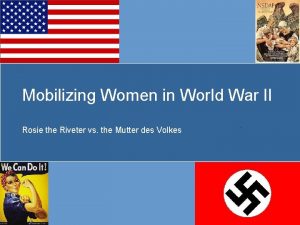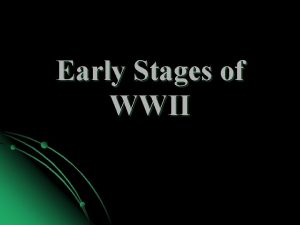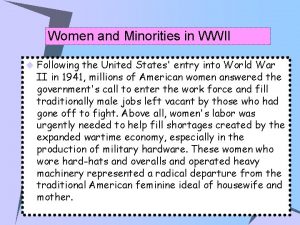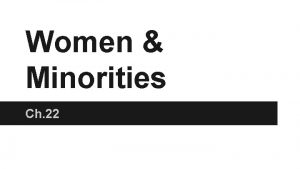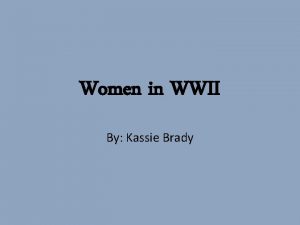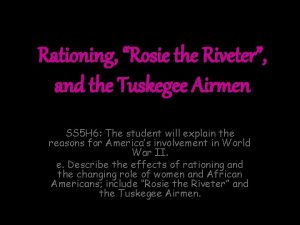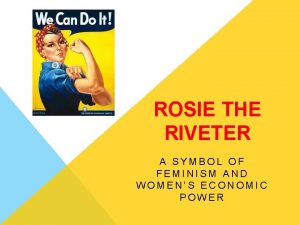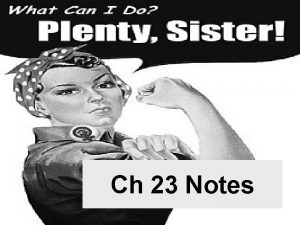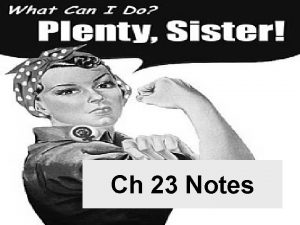WOMEN AND MINORITIES IN WWII A Riveter at











- Slides: 11

WOMEN AND MINORITIES IN WWII

A Riveter at a Lockheed Aircraft Factory in California.

A War Bond poster of a Tuskegee Airman The Tuskegee Airmen was the first black combat unit created by the army corps in 1941. Although many blacks enlisted in the army, they were excluded from combat until the creation of the Tuskegee Airmen. The Airmen engaged in combat with German fighter planes when they served as bomber escorts. They were the only fighter group that never lost a bomber to enemy planes.

Double V Campaign Black leaders enacted the Double V campaign-they wanted citizens to fight for ‘victory for democracy’ abroad and at home. These leaders were aware that the United States was fighting fascism and Nazism in Europe but still had blacks facing discrimination at home. Many blacks also participated in the war effort only to return home and face discrimination.

Mexican Americans fought in combat units during World War II. At home, they left their rural farms and filled war industrial jobs. Because of this, Mexico and the United States enacted the Bracero Program that allowed Mexican citizens to come to the United States to work.

Segregation in the Military Although blacks willingly joined the armed forces to serve their country, they faced discrimination and segregation. Many training camps had separate mess halls and barracks. Blacks served in segregated units and were not allowed to serve in combat until 1941. Pictured above: Men of an all black training unit at the Field Artillery Replacement Center, Fort Bragg, NC, are shown in their daily rifle calisthenics.

Women’s Army Corps (WAC) More than 150, 000 women served in the Army during WWII. The prevailing philosophy was that women could best support the war effort by performing noncombatant military jobs for which they were already trained. This allowed the Army to make the most efficient use of available labor and free men to perform essential combat duties. Some of the jobs include working at Aircraft Warning Service units, mixing gunpowder, issuing weapons, flying planes, driving trucks, and other non-combatant jobs. The Women’s Army Corps also served overseas in the

WAC

“We Can Do It!” War Productions Coordinating Committee When men went to fight in the war, there were millions of jobs that needed to be filled. The government and businesses turned to women to fill these jobs. Women, who traditionally stayed at home, stepped up and worked as welders, machinists, riveters, and in other mechanical jobs. Although women were essential for keeping up with wartime demands, they were typically paid less than men who worked the same job. Working women were also expected to fulfill their domestic responsibilities such as keeping up the home and raising the children while the men

Women participating in war job training at a school In Florida.

Women working on the noses of A-20 attack bombers.

